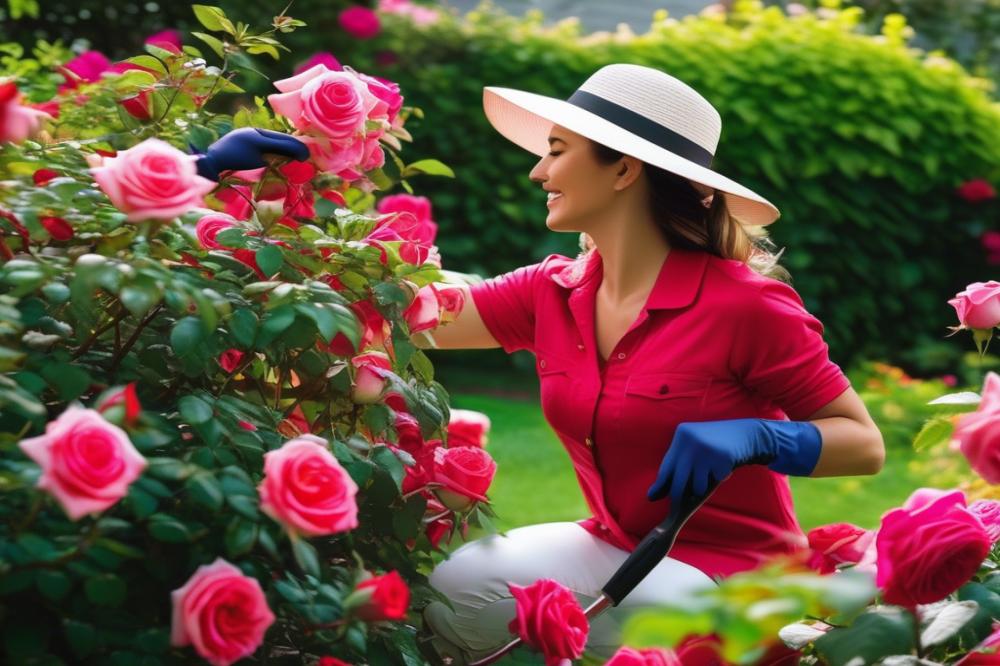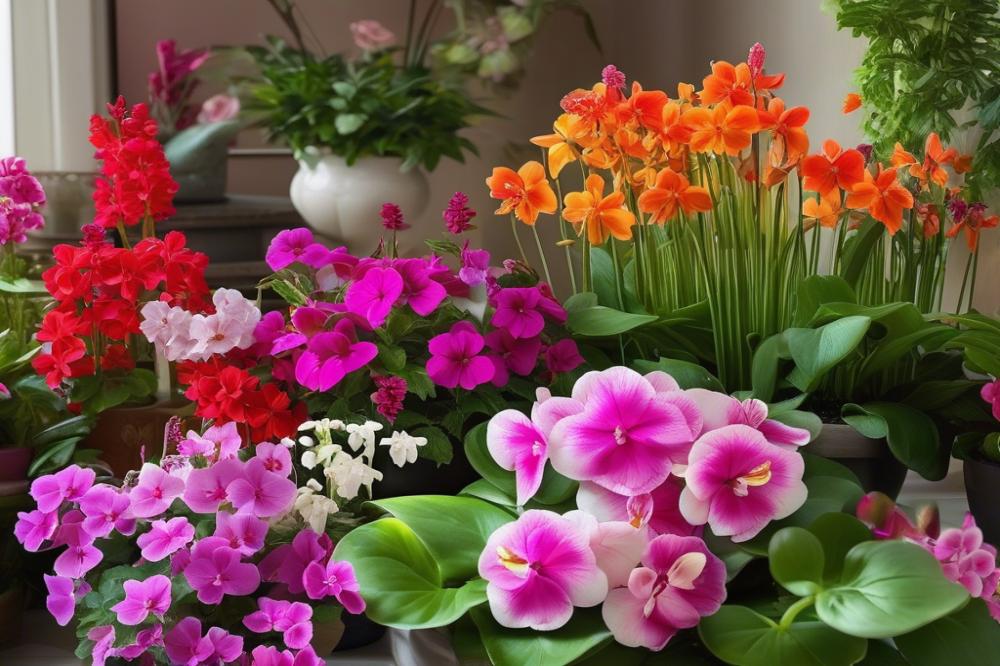The Secret to Growing Healthy and Pest-Free Roses
Roses have captivated gardeners for centuries. These beautiful blooms represent love and passion, bringing vibrant colors and delightful scents to any landscape. However, maintaining their beauty requires care and dedication. Healthy Roses not only enhance the beauty of gardens but can also uplift spirits. The satisfaction of nurturing these plants and watching them thrive is profound.
Rose cultivation is a rewarding hobby that many find fulfilling. Whether you’re a beginner or have experience, understanding the essentials of rose care is crucial. Selecting the right rose varieties helps lay a solid foundation. Each variety has its needs, and knowing these helps create a thriving garden. With proper attention, even the most delicate roses can flourish.
Gardening without pests is a dream for many growers. Pest-Free Roses mean less worry about damage and disease. Implementing effective pest control methods is essential. Creating a balanced ecosystem around your garden fosters natural pest control. Strategies like companion planting can deter harmful insects and promote healthy growth. A focus on soil health is equally important. Healthy soil leads to strong plants capable of defending themselves from invaders.
Fertilization and watering tips play a role in keeping roses robust. Proper watering techniques ensure that your plants receive enough moisture without becoming waterlogged. Regular pruning techniques help maintain plant shape and encourage new blooms. Disease prevention strategies such as monitoring for symptoms can save your roses from significant harm. Investing time and effort into these practices contributes to a successful rose garden.
By embracing the principles of organic gardening, you can grow beautiful and resilient roses. The benefits extend beyond your garden, offering a chance to support local ecosystems. A commitment to caring for your roses can lead to unique rewards, including stunning blooms that you will cherish throughout the seasons.
Healthy Roses: Understanding rose care

Maintaining roses requires attention and knowledge. Key elements of rose care include proper watering, nutrient-rich soil, and careful pruning techniques. Roses thrive when they receive just the right balance of sunlight and shade. Paying close attention to the needs of your plants can make a significant difference.
Key Elements of Rose Care
Watering tips are crucial for rose health. Young plants need consistent moisture, while established ones can tolerate periods of dryness. Choosing the right fertilizer also plays a vital role. organic gardening methods often provide the best nutrients. Avoid chemicals whenever possible; they can harm beneficial insects and soil organisms.
Importance of Soil Health for Roses
Soil health forms the foundation of any successful rose garden. Quality soil enhances nutrient absorption and promotes robust root development. Consider conducting a soil test to measure pH levels and nutrient content. Amending the soil with compost improves both structure and fertility. Healthy soil supports your plants in fighting off diseases and pests.
Selecting the Right Rose Varieties for Your Garden
Your choice of rose varieties greatly impacts success. Some varieties are more resistant to common diseases. Look for hardy types that match your climate and garden conditions. If you have limited space, consider compact options or climbing roses that can add beauty without requiring much room. Companion planting with herbs or flowers can also provide natural pest control, creating a healthier environment for your roses.
Ultimately, understanding these core principles will lead to thriving roses in your garden. With a little effort and knowledge, you can cultivate a vibrant display that enhances the beauty of your home.
The Role of Soil in Healthy Rose Growth

Soil is the foundation of your rose garden. Without good quality soil, roses struggle to thrive. A healthy environment allows roses to grow strong and resist diseases. First, you must think about soil composition; it should be rich in nutrients and have good drainage. Consider what your plants need. They prefer loamy soil, which includes a mix of sand, silt, and clay. Proper soil encourages root development and water retention, essential for plant health.
Testing soil is a crucial step in rose care. You can buy simple testing kits to check pH levels and nutrient content. Ideally, roses like a pH between 6.0 and 6.8. Low or high pH can lead to nutrient deficiencies. If necessary, amend the soil. Adding compost enriches it naturally and improves structure. Organic matter not only feeds the plants but also boosts beneficial microorganisms that help flowers resist pests and diseases.
Incorporating organic gardening practices benefits rose health immensely. Use natural fertilizers like compost or well-rotted manure instead of synthetic options. These fertilizers enhance soil health over time and promote robust growth. Pay attention to watering tips; well-watered roses flourish. Too little moisture can lead to stress, while too much can cause root rot. Maintain a balanced watering schedule for vitality.
Companion planting can also support healthy roses. Selecting the right companion plants helps deter pests naturally. Marigolds, for instance, keep harmful insects at bay. Additionally, consistent pruning techniques are necessary to maintain shape and remove dead wood. This practice improves airflow and keeps the plants disease-free. Never overlook the significance of selecting the right rose varieties. Some are more resilient and resistant to local pests, making them easier to manage.
When it comes to fertilization, timing is key. Feed roses in spring as they wake up from dormancy. A second feeding in mid-summer supports blooming cycles. However, avoid late-season fertilization to prevent soft growth that won’t survive winter. Protecting your roses stems from a solid foundation built upon soil quality. Engage in regular tests and amendments to cultivate a thriving garden.
Effective Pest Control for Roses

Common Pests That Affect Roses
Roses can attract a variety of pests. Aphids, for example, are tiny insects that suck the sap from plants. Their presence can lead to curled leaves and stunted growth. Spider mites are another issue; they thrive in dry conditions and create webbing on the plants. Japanese beetles, with their shiny bodies, can destroy leaves quickly. Furthermore, thrips may cause discoloration on petals. Understanding these pests helps in taking action before it’s too late.
Organic Pest Control Methods
Organic pest control offers safe ways to protect your roses. Neem oil is a natural insecticide that targets many pests without harming beneficial insects. It disrupts the life cycle of the pests. Another option is using insecticidal soap, which suffocates soft-bodied insects. You can also introduce beneficial insects, like ladybugs and lacewings, to your garden. These friendly creatures feed on many harmful pests. Additionally, homemade solutions like garlic spray can deter unwanted visitors. With patience and the right techniques, your roses can thrive naturally.
Preventative Measures to Minimize Pest Issues
Using good rose care practices is vital for keeping pests away. Focus on soil health by adding compost, as healthy plants are more resistant to pests. Proper watering is essential; overly wet conditions can attract insects. Additionally, practicing proper pruning techniques helps improve air circulation. Reducing humidity around the plants makes them less appealing to pests. Companion planting can also be beneficial. Placing flowers like marigolds near your roses can help keep pests at bay. Regularly checking your plants can catch any issues early. Taking these steps creates a better environment for your favorite rose varieties.
Disease Prevention Strategies for Roses

Overview of Diseases That Can Harm Roses
Roses can fall victim to a variety of diseases. Fungal infections, such as black spot and powdery mildew, are common threats. Bacterial wilt can lurk in the soil and harm roots. These diseases weaken plants, causing foliage to drop and blooms to wither. Knowing what diseases are out there is crucial for any gardener aiming for vibrant flowers.
Best Practices for Disease Prevention
Implementing effective rose care is essential for a thriving garden. Regularly practicing sanitation can be beneficial. Remove fallen leaves and debris to reduce fungal spores. Choose disease-resistant rose varieties. This simple step can save you time and effort in the long run. Pruning techniques also play an important role. Trim away dead or diseased wood to promote better airflow. Fertilization and soil health also go hand-in-hand. Healthy plants are more resistant to diseases. Adding compost can improve soil quality and provide essential nutrients.
Importance of Monitoring and Early Intervention
Monitoring your roses regularly allows you to catch problems early. Look for signs of distress, such as discoloration or unusual spots. Early intervention can make a huge difference. Treat affected areas immediately with organic gardening methods whenever possible. Utilizing pest control measures can help stop diseases before they spread. Companion planting with herbs can deter pests and promote a thriving ecosystem. By following these tips, you can keep your roses strong and healthy.
Watering Tips for Healthy Roses
Proper Watering Techniques
Watering roses can seem simple, yet it requires careful attention. Aim to water deeply rather than frequently. This promotes strong root growth. It’s best to water in the morning. Doing so reduces evaporation and fungal disease risks. Keep the water at the base of the plant. Avoid wetting the foliage to help with disease prevention. A soaker hose or drip irrigation system works well for delivering water directly to the soil. Remember to adjust your watering based on your rose care routine. Different roses have varying needs based on their growth stage.
Understanding the Watering Needs of Different Rose Varieties
Each type of rose has its own watering requirements. Some varieties thrive in drier conditions, while others need more moisture. Hybrid tea roses often need more consistent watering compared to shrub roses. Recognizing these differences is key to success. Pay attention to how your plants respond. If the leaves start to wilt or drop, they might be thirsty. Conversely, yellowing leaves can signal overwatering. Keep a close eye on the moisture levels in the soil. Healthy soil health is crucial in helping your roses thrive.
The Impact of Weather and Season on Watering
Weather conditions play a significant role in watering needs. Hot summer temperatures can dry out the soil quickly. During these times, daily watering may be necessary. Conversely, spring brings rain, so you might need to limit watering then. Autumn often sees a slowdown in growth, allowing you to reduce frequencies. Always consider the season when planning your care routine. Utilizing companion planting can help retain soil moisture and improve the garden environment. Adjust your approach based on how well your roses seem to be adapting to these changes.
Fertilization Techniques for Robust Rose Growth
Choosing the Right Fertilizers
Selecting the proper fertilizers is crucial for rose care. Roses thrive on nutrients. NPK, which stands for nitrogen, phosphorus, and potassium, is fundamental to their growth. A balanced fertilizer with equal parts of these three nutrients is often a good choice. Some roses benefit from high phosphorus content, especially when blooming. Look for formulations labeled specifically for roses. They contain essential elements that promote healthy roots and vibrant blooms.
Timing and Methods of Fertilization
When to fertilize roses affects their overall health. Early spring, just as new growth begins, is an ideal time. At this point, nutrients help fuel robust growth. Another fertilization period occurs after the first bloom, promoting continued flowering. Always follow package instructions for application rates. Granular fertilizers can be sprinkled around the base. Liquid fertilizers may be diluted in water and used effectively in watering routines. These techniques play a vital role in maintaining soil health and preventing any deficiencies.
Organic Options for Rose Fertilization
Organic gardening practices are increasingly popular among rose enthusiasts. Compost is a fantastic source of nutrients for roses. It improves soil structure while providing essential minerals. Additionally, well-rotted manure contributes to disease prevention and enriches the soil. Blood meal and bone meal are other organic fertilizers worth considering. These provide quick-release nitrogen and phosphorus for growing plants. Implementing these organic options can significantly boost pest control efforts. Always check the nutritional needs of your specific rose varieties before deciding.
Pruning Techniques for Optimal Rose Health
When and how to prune roses
Pruning is a crucial part of rose care. The best time to prune depends on your local climate. Typically, you should prune before new growth begins in early spring. Timing is key to promoting healthy blossoms. For most regions, this means late February to early March. Use sharp, clean tools for cutting. Make angled cuts just above a bud, which encourages growth. Remove any dead or diseased wood right away. This helps the plant focus its energy on healthy growth.
The benefits of pruning for pest and disease control
Pruning plays a significant role in pest control and disease prevention. It opens the center of the bush to sunlight and air circulation. This exposure reduces the chances of fungal infections. Thinning out crowded branches deters pests that thrive in shaded areas. Healthier plants are better equipped to resist diseases. Additionally, removing old blooms can reduce harboring spots for pests. Regular pruning leads to stronger, more resilient roses.
Pruning based on rose varieties
Different rose varieties require unique pruning techniques. For example, hybrid tea roses benefit from being cut back significantly. In contrast, shrub roses require less severe cutting. Understanding your rose variety is essential for effective gardening. Climbing roses often need special attention for training. Aim to remove old wood while encouraging new growth with each season. Knowing the right technique for each type can improve overall soil health. It is essential for maintaining a vibrant garden.
Companion Planting for Pest-Free Roses
Benefits of Companion Planting
Companion planting is a straightforward yet effective way to enhance rose care. This method involves growing specific plants next to roses to protect them from pests and diseases. Plants that are compatible with roses can deter harmful insects. They create a natural barrier and attract beneficial creatures that will further promote pest control. Additionally, this technique supports soil health by improving nutrient availability. It encourages a diverse ecosystem, which is vital for a thriving garden.
Recommended Plants to Grow Alongside Roses
Consider adding marigolds and lavender to your rose garden. Marigolds are known for repelling aphids and nematodes. Lavender, with its fragrant blooms, attracts pollinators and pests’ enemies like ladybugs. Other good companions include chives and garlic, which can help ward off aphids and other harmful pests. Incorporating nasturtiums can also be beneficial, as they often lure aphids away from roses. Don’t forget about herbs like thyme and oregano, which can complement roses while enriching the soil.
How Companion Planting Can Enhance Rose Health
By adopting companion planting, you can significantly boost rose health. These partnerships not only reduce pest issues, but they also promote a strong ecosystem. Increased biodiversity means better pollination, leading to more vibrant blooms. Healthy companions prevent diseases by creating a protective environment. Regular pruning techniques and proper fertilization also work well with this approach. Keep in mind that watering tips remain crucial for maintaining vibrant rose varieties. Engaging in organic gardening practices ensures that your garden flourishes without harmful chemicals.
Final Thoughts on Your Rose Journey
Recapping the essential tips for growing roses is important for every gardening enthusiast. Start with soil preparation. Well-drained, nutrient-rich soil is crucial to your plants’ health. Fertilizing regularly gives your roses the nutrients they crave. Watering consistently, especially in dry spells, helps keep them hydrated and flourishing.
Implementing disease-resistant varieties can be a real game changer. Choosing the right plants means less struggle against pests and diseases later on. Practicing good air circulation by spacing plants appropriately is also vital. This simple trick can help stave off mildew and other issues.
Be proactive in your rose care. Regular inspections will help catch any pests or diseases early. If you do spot a problem, remember that organic gardening methods can be very effective. Using natural remedies is a great way to protect your garden without harsh chemicals.
Ultimately, growing roses should be a joyful experience. With dedication and these helpful practices, a beautiful, pest-free rose garden is entirely within reach. Embrace the process and celebrate the small victories along the way. Your efforts will bloom into a stunning garden that you can enjoy for years to come. So, roll up your sleeves and dive into this rewarding journey. Happy gardening!



